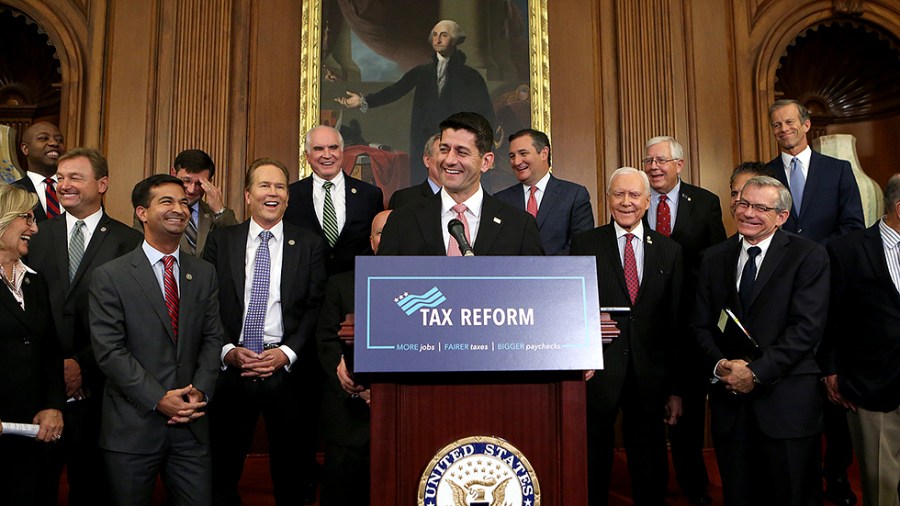As Congress works on tax reform, the topic of dynamic scoring deserves more attention.
As the policy director and chief economist at the House Committee for Ways and Means for former Chairman Dave Camp (R-Mich.), I worked closely with the Joint Committee on Taxation (JCT) as it scored Camp’s tax reform legislation. Thus, I can share some lessons learned from that experience.
{mosads}Dynamic scoring differs from static scoring in that it accounts for how the legislation impacts economic growth. Static scoring assumes the size of the economy is fixed no matter how significant the reforms. There is no debate among economists that tax reform would impact economic growth — the debate is to what degree.
Dynamic scoring is not perfect. Given the complexity of the U.S. economy, no model can capture the full impact of reform on the economy. Every model allows parts of the economy to change while other parts are fixed. So every dynamic score is incomplete. Understanding which parts can change and which are fixed is key to understanding the score.
JCT worked hard to improve their models, particularly with regard to understanding the benefits of international reform. But even then the models have limits that Congress needs to be aware of. JCT’s analysis of the Camp bill provided a wealth of information on the impact of tax reform on economic growth.
For example, a change to how quickly businesses’ can deduct the cost of new investments has an outsized impact on economic growth. The provisions in the Camp bill that slowed these deductions were a drag on the economy.
Lower tax rates, for both individuals and businesses, and the increase in investment from international tax reform more than offset the impact of slowing those deductions. But if the Camp bill had not slowed investment deductions the increase in economic growth would have been even stronger.
JCT used two models and a range of assumptions to score the Camp bill. JCT estimated that the Camp bill would increase the rate of economic growth by between 0.1-1.6 percent, with an average of about 0.5 percent.
Six of those estimates came from the JCT’s MEG (Macroeconomic Equilibrium Growth) model and two came from JCT’s OLG (Overlapping Generations) model. Understanding the limitations of these models is key because the limitations likely resulted in the models underestimating the increase in economic growth.
For example, the MEG model assumes that a dollar of federal spending has the same macroeconomic impact as a dollar of tax relief. We know that isn’t true: CBO says that private investment has a bigger impact on economic growth than public investment.
Therefore, the model underestimated the economic benefits of private sector investment. Further, the MEG model requires assumptions about how labor responds to changes in tax rates. In prior analysis, JCT always reported a median and low estimate of how labor responded to changes in tax rates.
We asked JCT to provide a high estimate as well. JCT changed its analysis by relabeling the middle estimate as the high update. Thus, the JCT analysis likely underestimated the response by workers to lower tax rates.
The MEG model also includes an assumption that the Federal Reserve raises interest rates in response to stronger economic growth. JCT’s lowest estimates came from the MEG model that used the low labor estimates and assumed the Federal Reserve would actively fight the benefits of tax reform. Not counting those estimates, the increase in GDP growth averaged 0.9 percent.
JCT’s second model, the OLG model, estimated GDP growth would increase between 1.5-1.6 percent. The OLG model is better at distinguishing between different types of investment and is better at incorporating the impact of international tax reform in the analysis.
However, the OLG model has a very restrictive debt constraint. It assumes that the debt-to-GDP ratio cannot change — either increase or decrease. Thus, when the Camp bill increased economic growth and tax revenue, JCT had to counter that in the model by assuming higher welfare payments — even though nothing in the legislation actually increased welfare payments.
Inside the model, the new welfare payments reduced the incentive for individuals to work, resulting in a smaller increase in employment, wages and economic growth than tax reform would actually have.
Thus, understanding the bias’ and limitations in the economic models used to estimate the impact of tax reform on economic growth is critical. Because of inherent limitations in every model the results will be incomplete and likely understate the impact on economic growth.
Warren Payne served as policy director and chief economist for the House Ways & Means Committee under former Chairman Dave Camp and is currently employed at Mayer Brown as a senior tax and trade policy advisor.
